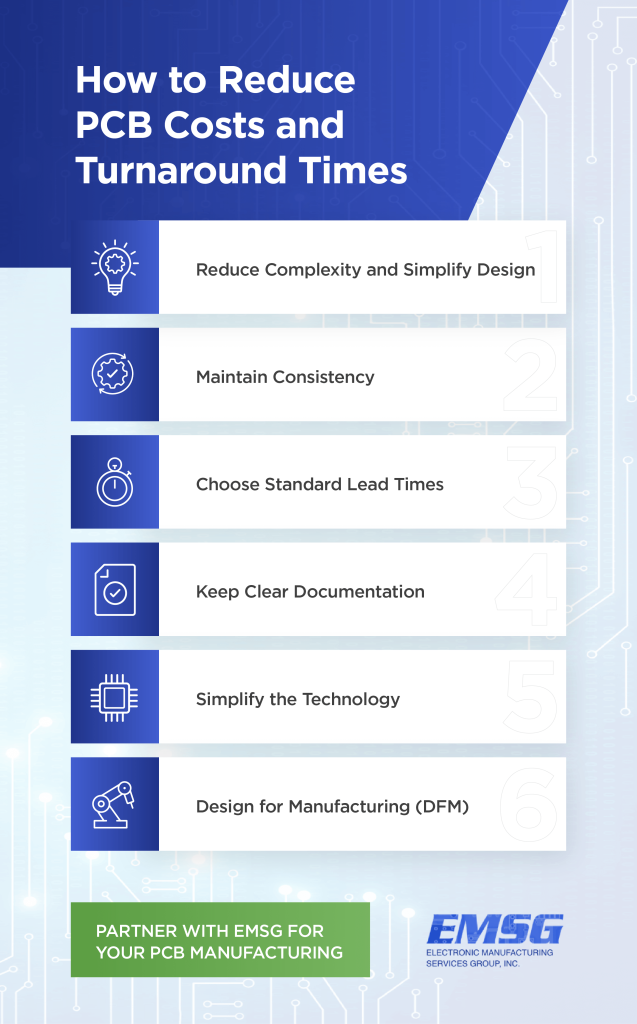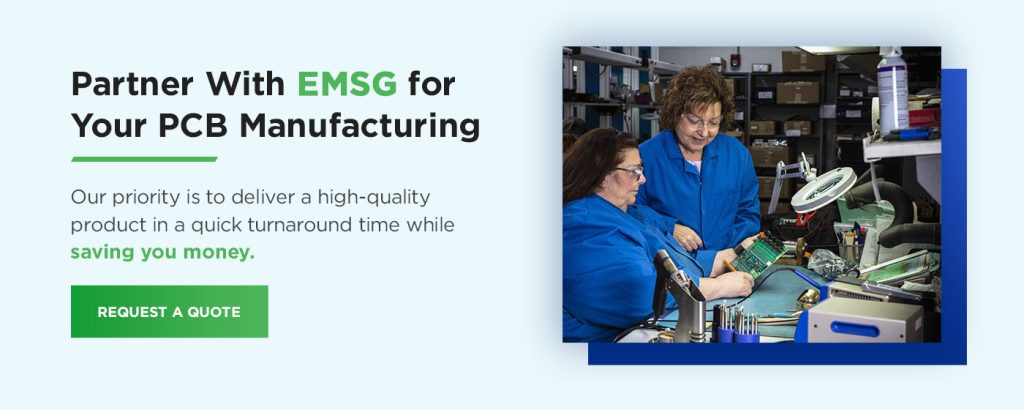
Printed circuit boards (PCBs) are a key component in today’s devices. Companies need to produce high-quality products in a short amount of time while keeping the cost of a printed circuit board low. While the process of manufacturing PCB can be complex, it is possible to simplify the process while maintaining effectiveness. You can reduce the cost of PCBs while producing a top-notch product. In this article, we’ll look at ways to reduce PCB costs while keeping your competitive edge.

Manufacturing PCB can be a complex task, especially when you’re dealing with multiple standards and protocols. When possible, stick to the common industry standard sizes for electronic components to help manage your design complexity. Some common MSD package sizes include 0402, 0603, 0805 and 1206.
You should aim to save space wherever possible but avoid narrowing down your design to the point that you have to perform multiple runs to assemble your board. Keeping your design as a square or rectangle will also help simplify the process.
You can further reduce PCB costs by selecting board material that is a cheaper option, such as FR4 or metal clad, rather than specialty material. That being said, the wider the tolerance for components, the more options will be available to you — 1% and 5% vs .01% and .05%.
Include substitute parts in your bill of materials (BOM) to take advantage of lower pricing and greater availability. The more information that you include in your BOM, the better. Here is a list of the most common details to include in a BOM:
Using fiducial markers, you can make it easier for manufacturers to find and place parts on the PCB.
Many circuit boards have multiple layers, which can drive up costs. Each layer requires fabrication steps, which take up time in the manufacturing process. By eliminating layers, you can reduce the turnaround time and the cost of PCB fabrication. The ideal number of layers is two because two-layer circuit boards require fewer pressing, etching, plating and overlay steps. Opt for blind and buried vias over through-hole vias to reduce your layer count.
If you are building multiple different boards, component commonality across versions will allow for greater purchasing volume and increased savings. If the component is widely available, you can shave some costs off your order.

Another way to reduce costs without compromising quality is to avoid quick turnaround times. The quicker the turnaround time, the more expensive the order. Most manufacturers usually offer a faster option along with a standard alternative. If you can afford to wait a few more days, opt for the standard lead time to reduce your costs.
The unit price and order quantity have an inverse relationship — the greater the quantity you order, the lower the unit price. Economies of scale will affect the cost of your order. Place an order for as much as you reasonably need rather than ordering in multiple batches. The savings could add up in the long run. It’s also wise to form a long-term relationship with a supplier to avoid the cost of changing suppliers.
When sending board files to a manufacturer, include a spec sheet to help ease the manufacturing process. Here is a list of some important notes to include:
Without precise specifications, the manufacturer will need to figure out the crucial details on their own, which can slow down the manufacturing process.
Completing your board using surface mount assembly (SMT) or through-hole technology will decrease the assembly time and save you money. If possible, choose SMT over through-hole technology. It’s easier to find parts for SMT technology because it is ideal for most applications, so there is more demand for it. SMT assembly allows for an automated process so manufacturers can place parts faster, reducing turnaround time and costs.
A DFM check and after-assembly inspection may cost a little more upfront but potentially save a lot of money on the back end. The purpose of a DFM check is to eliminate miscommunication between the designers and manufacturers. Specialists can work together through the development and testing process and send a product back for revisions when needed. Because the feedback is in real time, you can also catch design flaws immediately and make changes before production begins, saving time and money. DFM allows you to eliminate mistakes that could lead to halts in production and wasted production runs.
At EMSG, we prioritize delivering high work standards in quick turnaround times. We offer a wide range of PCB services for your needs.

PCB design and manufacturing can be a complex process. It’s important to be meticulous about your processes to help you save time and money. One of the best ways to do this is to choose a reliable and experienced manufacturer.
At EMSG, we understand the PCB assembly process from conceptualization to product launch. Our priority is to deliver a high-quality product in a quick turnaround time while saving you money. When you partner with us, you gain access to skilled professionals and state-of-the-art technology that can help you produce the best-finished product. To learn more, request a quote today!